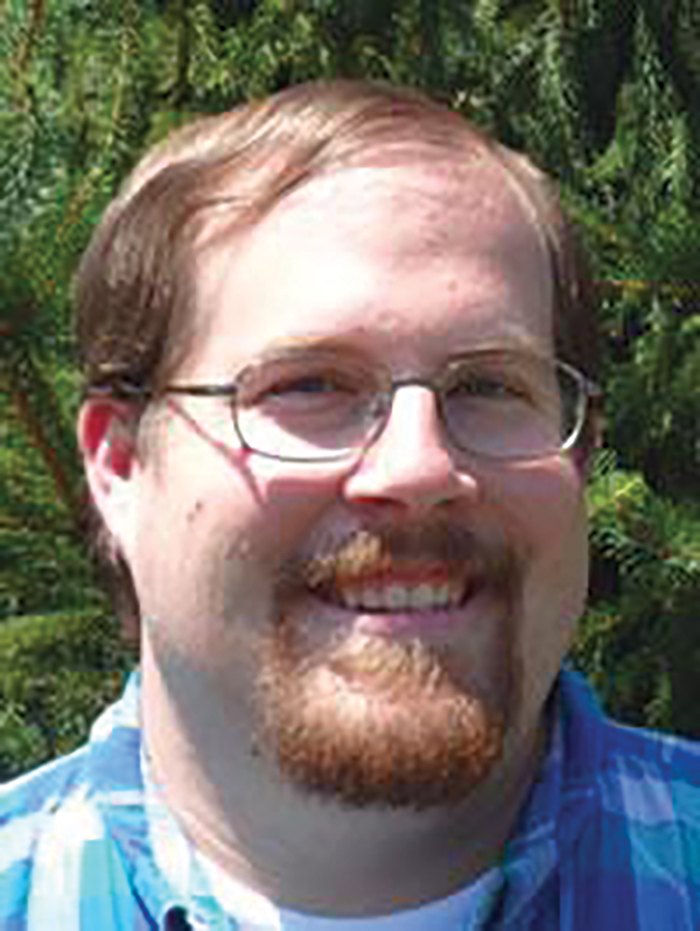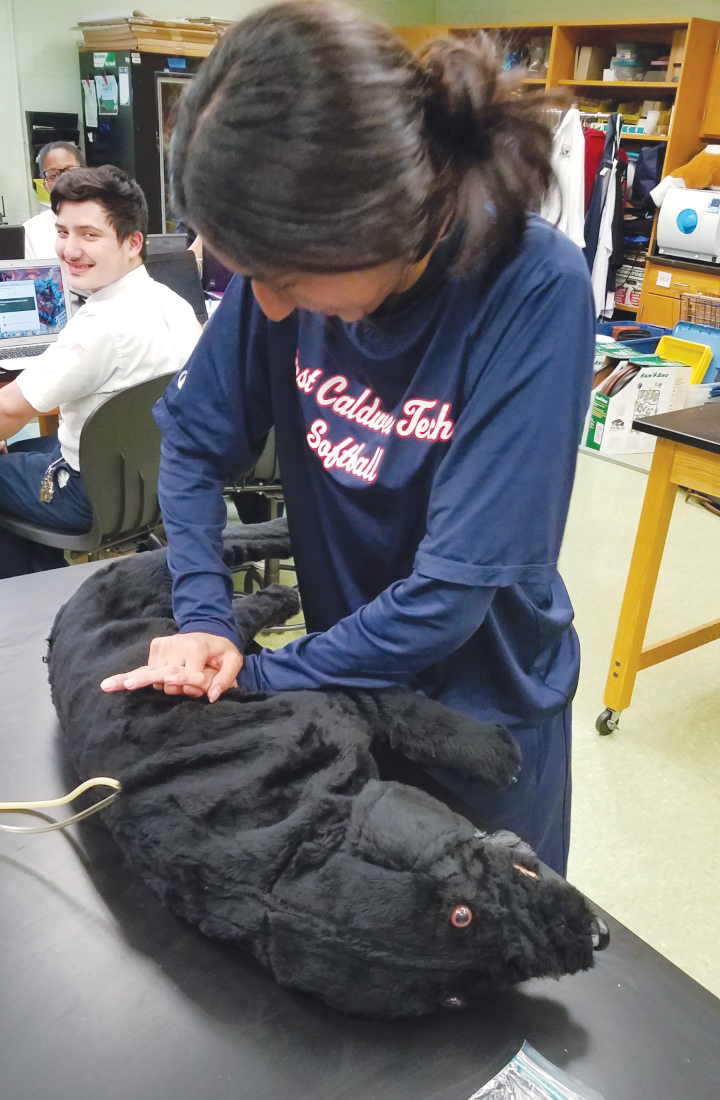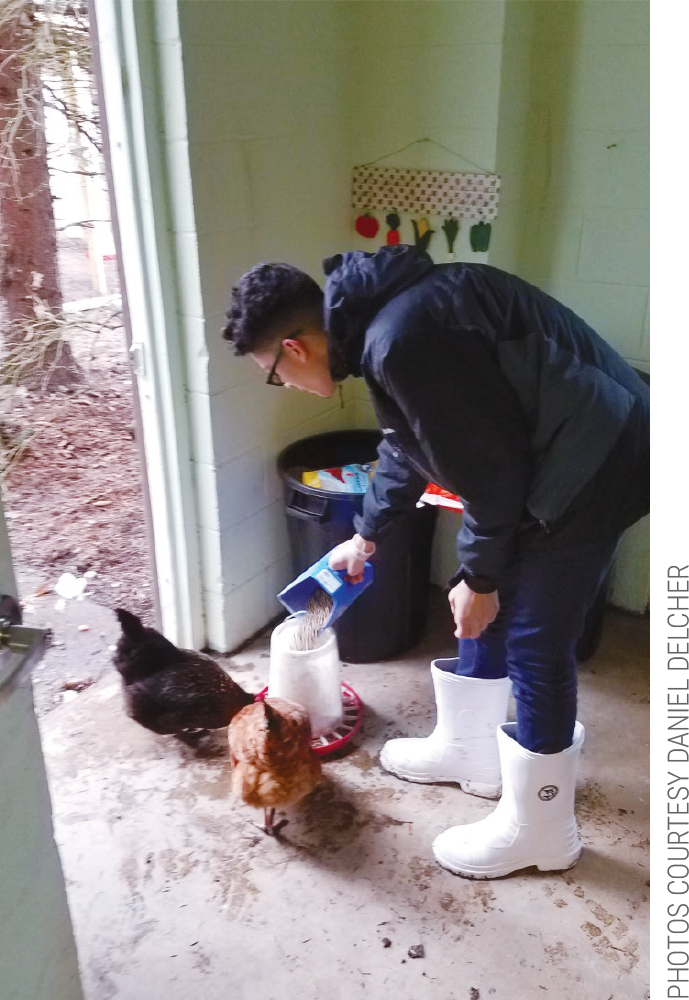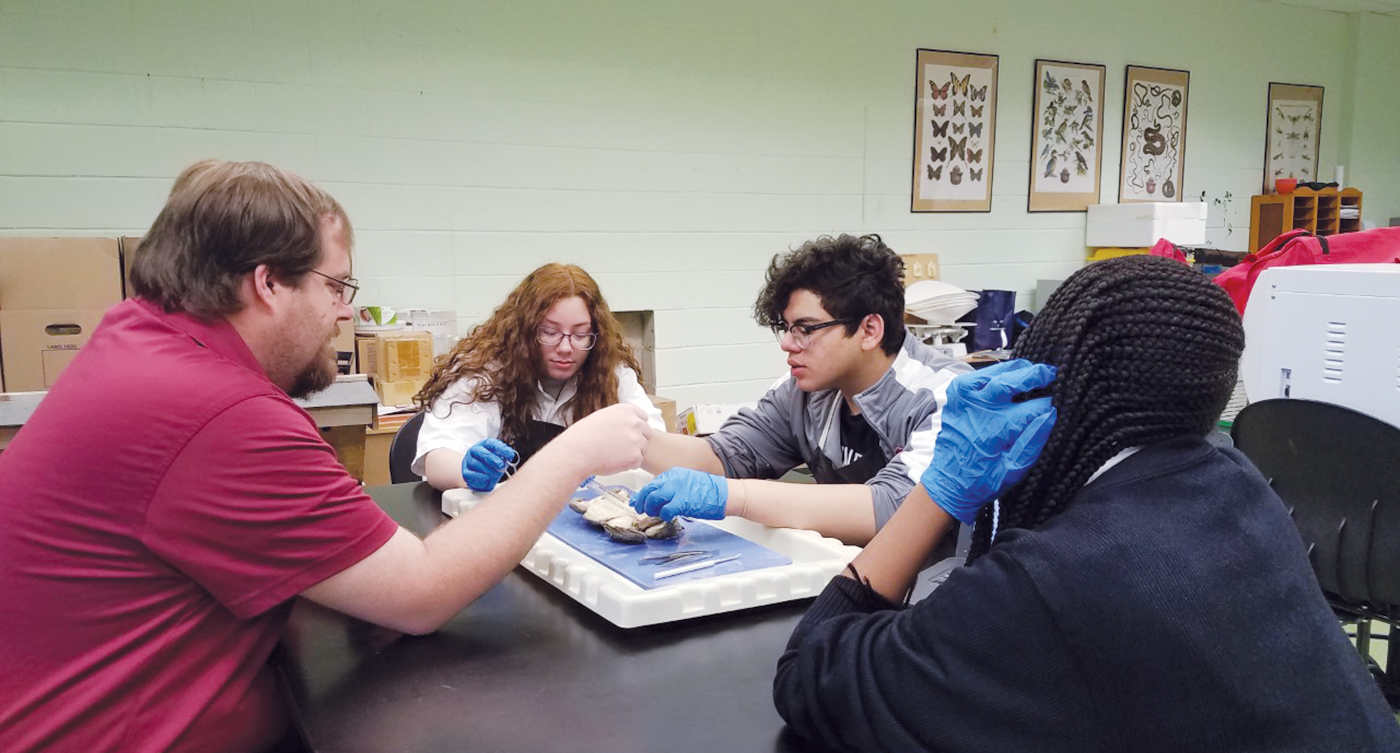Teacher Spotlight
Teacher Spotlight: Daniel Delcher

Daniel Delcher
Where do you teach? What do you teach? Describe your school, its resources, and anything else that makes it a great place to teach.
I teach for the Essex County Schools of Technology–West Caldwell Tech Campus in West Caldwell, Essex County, New Jersey. The school is one of three schools of the Essex County Schools of Technology district, which is one of New Jersey’s county career and technical high school districts. The school is an urban/suburban school with the majority of our students living in the Newark metro area and neighboring cities. We have about 380 students; our student population is 44% black and 49% Hispanic. Forty percent of our students have Special Education accommodations, we have a growing English-Learner population, and 72% of students live in economically-disadvantaged households (which could now be higher due to the COVID-19 outbreak.)
In Summer 2019, our school moved to a temporary facility in Bloomfield, NJ while we undergo a major renovation construction project scheduled to open in the end of January 2021. I work with 60 hard-working, dedicated, and caring teachers, support professionals, counselors, and administrators. The combination of our students, teachers, staff, administrators, and the school community help create a positive environment for learning that makes it a great place to work.
At the school, I am an Agriculture Science teacher in the STEM-CTE Department, and teach Animal Science classes that cover topics including anatomy and physiology, animal behavior, reproduction and genetics, evolution, biotechnology, animal health, and research practices. My students have the opportunity to work with a wide variety of animals including rabbits, guinea pigs, reptiles, amphibians, tropical birds, chickens, honey bees, and fish. My students and I are looking forward to the move into our new animal science lab, greenhouse, and outdoor classroom that is a part of the school renovations when we move in later this school year. We have been very thankful for all of the resources and opportunities that my administrators have provided over the years. Along with being the agriculture science teacher, I also serve as the school environmental sustainability officer and advise the 4-H/FFA club.
What three things guided you in deciding to be a science teacher?
I decided to be an agriculture science teacher because of my passion for animals, plants and the environment; how science is applied for the advancement of our daily lives, and sharing my passion for science with others. I have always been fascinated with animals, plants, and the environment and the applied science behind our world. Growing up in rural southern New Jersey, I lived surrounded by farms, took agriculture science classes in High School, and participated in Boy Scouts and FFA. When I was in college, I worked during the summer for Rutgers’ University Cooperative Extension Service Research Farm where I learned an extensive amount about plant physiology and scientific research techniques. As I worked for Rutgers’ University and studied Education at Delaware Valley University in Doylestown, PA, I my passion for educating youth in agriculture science grew. I have enjoyed every moment teaching students about agriculture science for the past 12 years.
What three things were the most challenging for you during the adjustment to online teaching due to COVID-19?
Although my school has made great strides in becoming more sustainable through paperless teaching methods and providing every student with a laptop computer, moving to a completely online teaching environment has not been without challenges. My biggest challenges have been creating engaging video-conferencing lessons, trying to find virtual experiments or modifying labs that would be typically conducted in-person, and finding ways around students’ struggle with internet access at home.
What strategies did you use during COVID-19 virtual teaching to make your lessons engaging? What resources did you use during that time, e.g. Flip Grid, etc.?
During the initial state quarantine and the continued virtual/hybrid learning that has now been taking place in my school, I have adapted lessons to this new environment. To increase engagement, I have utilized a variety of resources including YouTube and creating my own YouTube videos, utilized simulators and interactive models such as and PhEt simulations, and interactive Nearpod lessons. I have also utilized Zoom and its functions including breakouts, whiteboard, and polling. My school originally utilized Google classroom for asynchronous independent activities, but we recently acquired Schoology due to added functions and integration to our student data system.
I have used the COVID-19 situation as a much larger case study to explore viruses, vaccines, zoonotic transmission, and the use of animals in medical and pharmaceutical research and development industries in an interdisciplinary fashion.

Student practicing canine CPR
How do you build relationships with your students?
The majority of my students have spent two or more years in one of my animal science classes, so we have had the opportunity to build a rapport with one another. It has been challenging in this virtual environment to maintain that rapport and establish a connection with freshmen or new students. In this new virtual climate, it has been important to give students a place to reflect and discuss with one another how they are feeling during the course of a virtual class meeting on Zoom. Student social and emotional well-being is a concern, and as educators its important that we provide a space where they can share their concerns relating to COVID-19 and social justice. Both COVID-19 and Social Justice conversations have led to broader discussions of a wide range of science topics including the persecution of many early scientists by the European governments and churches. Despite COVID-19, I have always been able to build relationships with students through mutual respect and understanding, and a shared passion for science and love of animals. It has also been my goal to keep science and learning fun.
In what ways do you differentiate lessons for your students?
When I was young in elementary and middle school, I was diagnosed and classified with Attention-Deficit Disorder (ADD). With my personal past in mind, I have been mindful to make accommodations for all of my students to meet their learning styles. I am a very visual and hands-on learner and that’s why I was also drawn to teach agriculture science. The opportunities for hands-on labs, demonstrations using models, and working one-on-one with plants in a greenhouse or animals in the lab have been valuable in engaging students over the years. I have also integrated videos, diagrams and posters; provided students with copies of notes and presentations; engaged students in competitions and games; and allowed students to teach each other. Integrating case studies, inviting guest speakers, and the occasional field trip and conference have all been ways that I have sparked student learning as well.
What teaching resources do you use to guide your teaching?
My teaching over the last few years has been guided by my use of the National Curriculum for Agricultural Science Education (CASE). CASE is a project of the National Association of Agriculture Educators and began development in 2008. Since then they have developed 11 rigorous and relevant agriculture science courses based on the Understanding by Design lesson model. All of my lessons are scaffolded and they use a variety of activities, projects, and problems. CASE requires teachers to become certified before using the curriculum through intensive professional development designed to give the teacher experience both as the teacher and also as the student. I am currently certified in six different CASE courses relating to animal and plant science. I have also integrated resources that I have gathered from regional universities including Rutgers University, Penn State, and Cornell University, and government agencies. I have also used a lot of ideas and resources from NSTA Reports.

Tending to the chickens
What is the project/lesson that you have implemented in your teaching career that are you most proud of?
I actually have two projects/lessons that I am most proud of during the course of my career. During the earlier half of my career, I taught plant science courses and worked with my students on constructing and working with a variety of different hydroponic growing systems. We even experimented with aquaponics and I had students design their own hydroponic systems using household items and plumbing parts. Students had the opportunity to explore plant anatomy and physiology, water chemistry, and learn to produce their own food over the course of the project. This project even contributed to my recognition by the United States Environmental Protection Agency as the 2017 Region 2 winner of the Presidential Innovation Award for Environmental Educators.
My recent class project involves embryology and breeding through working with several different animal species. I participate with the State Division of Fish and Wildlife with a program called Trout in the Classroom, which provides free trout eggs from the state fish hatchery. Students are then able to observe the fish hatch and develop over several months until the students release them into a local river approved for fish stocking. Our County 4-H agent then donated poultry egg incubators to the program and supplies us every year with free fertilized chicken eggs. We candle the eggs to observe their development and then care for them after hatching. We also built a coop and raised the chicks to maturity and started collecting the eggs. Recently, we have experimented with rabbit breeding and students have been developing pedigrees and working to document genetic differences in the offspring.
How can ALL the disciplines of science infuse more agriculturally-based experiences into their classes?
Agriculture Science provides an amazing opportunity to blend all of the disciplines of science! Creating interdisciplinary lessons and collaborating with my colleagues in the science department is one of my favorite things to do. Many people think of agriculture’s connection to biology; our biology teacher is one of the easiest people to work with on these projects. As an Animal and Plant Science teacher, I have spent much of my time discussing and running countless labs about anatomy and physiology of animals and plants, cell structure, osmosis and diffusion, meiosis and mitosis, DNA/genetics, evolution taxonomic classification, environmental impacts on the organisms and the organisms on the environment, and much more.
With chemistry, agriculture lends a hand when we look to soil science and nutrition. When I teach soils, I spend time discussing and testing for pH; examining the essential elements and their role as cations and anions in the soil and how they are absorbed by plants; and staying mindful of the chemical makeup and types of solutions found in fertilizers.
In Animal Nutrition, my students conduct a calorimetry test of several animals’ feed to determine their calorie content. Some agriculture students have even worked to explore the process of making biofuels. As for Physics/Engineering, in order for students to understand how a tractor works or how the animal body moves, they have to understand the principles of work, energy, and simple machines.
I encourage all science teachers to reach out to agriculture science teachers, or even other career and technical educators in their school because most likely they are covering some of the same topics and can close the student gap between the science and how it is applied in their daily lives.

Delcher in the classroom
What has been the most important lesson you learned from one of your students during your teaching career?
The most important lesson I learned from my students has been understanding and developing a respect for their diversity, their culture, and their community. Since I grew up in a completely different environment, I have learned a great deal about my students’ cultures and the communities in which they live. This has allowed me to alter my instructional delivery and examples to explain areas of science that would relate to their prior experiences. For example, when I discuss uses for animals, I would not typically discuss about Guinea pigs as a food source, but for many of my South American students, it is common in their culture and in their families’ home country to consume Guinea pigs as a protein source. It is important that we get to know our students not just as learners but as individuals of our community.
What is one piece of advice you’d give to first-year science teachers?
My advice for a first-year science teacher is to listen and learn in your first year. Listen to and learn from your students. Listen to and learn from fellow teachers. Listen to, learn from, and utilize your administrators. Too many young educators (I was guilty of this in my first year) need to listen and take the advice and constructive feedback from the people around us. You can not leave college and student teaching expecting to know everything. We are always learning, and the best place to start is from the people around us.
Careers New Science Teachers Teacher Preparation Teaching Strategies High School Grades 9-12


